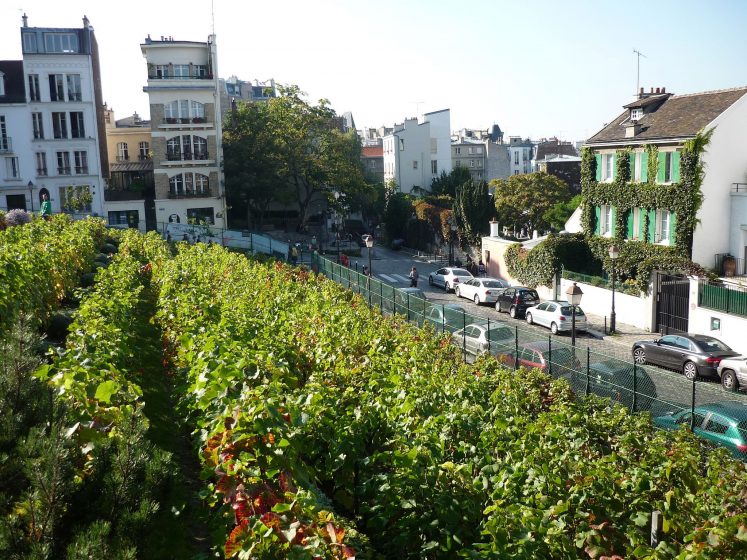The Best Strategy To Use For City Blooming
The Best Strategy To Use For City Blooming
Blog Article
Rumored Buzz on City Blooming
Table of ContentsFacts About City Blooming UncoveredThe City Blooming PDFsThe Greatest Guide To City BloomingGetting The City Blooming To WorkNot known Details About City Blooming
Intrigued in expanding food for sale in the City of Chicago? Below is a listing of often asked questions regarding the policies and policies that cultivators need to take into consideration when intending an urban agriculture project.
The zoning amendment does not modify any kind of other codes dealing with composting, structure permits, purchasing or leasing City owned home, service licenses or ecological contamination. There are existing codes that control these issues and they remain in complete result and may apply to your project. Neighborhood gardens are generally possessed or handled by public entities, civic companies or community-based companies and maintained by volunteers.
Urban ranches grow food that is meant to be sold, either on a not-for-profit or for-profit basis. Because of their industrial objective, city ranches call for a business permit. Yes. A neighborhood garden is allowed to offer excess produce that was expanded on site if the sales are accessory or subordinate to the yard's primary objective described over.
Not known Factual Statements About City Blooming
The amount of garden compost material can not go beyond 25 cubic lawns at any kind of offered time according to the requirements in 7-28-715 of the City's Municipal Code. Due to the fact that the dirt at a lot of brand-new garden websites requires amending, garden compost, soil, wood chips, or various other materials can be obtained to construct or enhance the growing area.

If a structure permit is needed then the hoophouse will be considered an accessory building. You can discover more about the structure license demands by getting in touch with the Department of Structures. The 25,000-square-foot size limitation is meant to avoid a solitary community garden from dominating an offered block or detracting from the block's existing household or commercial personality.
The restriction does not relate to gardens located in Public Open Room (POS) districts. Can there be greater than one area yard that is 25,000 square feet on a solitary block? Yes. The dimension limit relates to specific gardens, not to private blocks. No. Secure fencing is not called for, nonetheless, yards that have huge parking lot might be needed to set up fencing or other landscape design attributes.
5 Simple Techniques For City Blooming
B1 & B2 districts require that all industrial usage activities be carried out inside your home. Is fencing needed for urban ranches? Fencings may be called for, along with landscape design and testing, for particular vehicle parking areas and outdoor job or storage space locations depending on location and the specific activity taking place.
Yes. Urban ranches need building authorizations and zoning authorizations prior to construction. Other types of city testimonial might be called for depending upon particular frameworks, activities, size, landscaping, licensing, public health and stormwater management concerns. A lot of these requirements are recognized in the job style or permitting procedure, nevertheless, the applicant might be accountable to independently determine particular licenses or allows that might be needed.
The Division of Service Matters and Customer Protection can help identify the certain kind of organization permit that's called for. Off street auto parking is needed for many industrial projects in Chicago. The required number of parking rooms is based on the number of staff members working on website and not the square footage of the growing area.
City Blooming - The Facts

An urban ranch can offer compost material produced on site, however, the operation has to comply with the policies in 7-28-715 of the Chicago Municipal Code. Aquaponic systems are enabled inside on metropolitan ranches in numerous zoning districts.
Approximately 5 hives or swarms of honey bees may be kept as an accessory usage. Beekeepers have to sign up with the Illinois Department of Agriculture. For more info concerning the recommended zoning change you may speak to the Division of Real Estate and Economic Development, Bureau of Preparation and Zoning at 312.744.8563.
, which takes place in rural areas at the side of residential areas.
The 3-Minute Rule for City Blooming
It can entail a movement of natural growers, "foodies" and "locavores", that seek to create social media networks based on a common principles of nature and neighborhood holism. These networks can develop by way of formal institutional assistance, coming to be integrated right into neighborhood town as a "change community" movement for sustainable urban development.
Some of the very first evidence of metropolitan farming comes from Mesopotamia.
Report this page